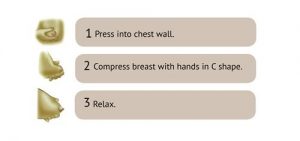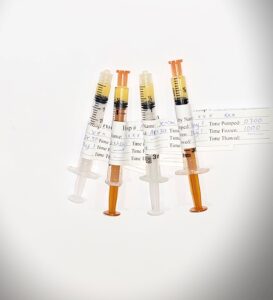Collecting Breastmilk Before Birth
Did you know that your body starts producing breastmilk before your baby is born? Beginning around the 16th week of pregnancy, your body starts producing its first form of breastmilk, known as colostrum. Your body will continue making this early breastmilk until the first few days after your baby is born.
This early breastmilk is thick, sticky, and usually yellow, clear, or white in color. It has protein, sugar, fats and antibodies that help boost your baby’s immune system.
Once you are 37 weeks pregnant, and have discussed it with your health care provider, you can start collecting and saving this breastmilk for your baby.
Why should I collect breastmilk (colostrum) before birth?
- It supplies all the nutrition that your baby needs in the first days of life and is beneficial to all babies.
- Families who have made an informed decision not to breastfeed can still provide their baby with colostrum collected during pregnancy.
- Some babies need extra nutrition after they are born (e.g. babies with low blood sugar or jaundice). By collecting colostrum before your baby is born, you will have the ideal food on hand to help your baby if needed.
How do I collect early breastmilk (colostrum)?
- Hand expression is the best way to collect colostrum! Hand expression is when you use your hands to massage milk out of your breasts.
- You can hand express 2-3 times a day for 5-10 minutes each time. The amount of colostrum you get may vary from a drop to a teaspoon.
- To learn about hand expression, watch this video
You may produce very little or no colostrum. That is ok! That does not mean that your milk supply will be low. You can still breastfeed your baby.
To learn more about collecting, storing, and preparing to use colostrum, explore the information below.
Collecting colostrum (step-by-step) (click to expand) »
|
Storing colostrum (click to expand) »
|
Bringing your colostrum to the hospital (click to expand) »
|
Services related to this information:
- Contact your Public Health Nurse:
- Prenatal Education
- 811 HealthLine (Newfoundland & Labrador) – Call 811 or 1-888-709-2929 / TTY 1-888-709-3555

 You can store all the colostrum that you collect in a 24-hour period in the same container (sealed tightly with a lid). Put it in the fridge between expressions.
You can store all the colostrum that you collect in a 24-hour period in the same container (sealed tightly with a lid). Put it in the fridge between expressions.